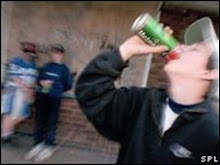The issue of youth and alcohol involves ideologies of youths as inferior to adults and irresponsible. As a result, the legal drinking age in Ontario remains at 19 years of age, one year more than the age of majority. Our research has found that despite the many efforts to control youth alcohol consumption, the legal drinking age does not provide significant control over the ability of youth to obtain alcohol.
It is commonly believed that by having a drinking age of 19 years, multiple forms of alcohol-related harm will be reduced in this province. However, our research has also shown that youth are over-emphasized in discussions of alcohol-related harm thus reinforcing the oppressive views of youth in this society. We believe that the current drinking age is a “band-aid” method of controlling alcohol-related behaviours.
Our focus for this social policy turned to a discussion of alternatives approaches to the legal drinking age of 19. We proposed that the legal drinking age be lowered to 18 years of age in Ontario. The purpose of this is not to allow more alcohol access to youth. Rather, it is to provide youth with the opportunity to stand up against the oppressive ideologies that discriminate against them and keep them marginalized from adult culture. Also, we will use feedback to determine if 18 is reported by youth as the desired legal drinking age and make adjustments to our efforts based on their voices.
To accomplish such policy alterations, we will begin by addressing the views and opinions that maintain these oppressive ideologies of youth. Our immediate aim is not to change the legislation but to provide a means to dispel the inaccurate and discriminate constructions of youth while also allowing for participatory action of youth themselves. Through public information sessions, a youth-driven media project, and use of the local media and internet, we will attempt to provide a social space in which new, accurate constructions of youth can be developed. This will guide us toward our future goal of creating a legal drinking age that is driven by youth themselves thus empowering them as agents in their own individual, social, and political lives.
Wednesday, December 3, 2008
Tuesday, December 2, 2008
CONS: Drunk Driving and Fake ID Opportunities

A stated advantage of lowering the legal drinking age is the increase of young people who will start drinking at bars instead of at home unsupervised. However, with bar drinking comes driving. Unfortunately, many people drive to the bar, which means they must drive home afterwards. In most cases, when drinking at home or in the dorm, there is nowhere to drive afterwards.
One of the most anticipated problems with lowering the legal drinking age will be the availability of fake IDs. Individuals who are below the legal drinking age will be able to get a hold of fake IDs more readily. Because the age on the ID will be younger, a younger underage individual may get away with buying alcohol illegally more easily. Moreover, the fake ID business will have the opportunity to expand, since the change of the LDA will affect first year university students. The more opportunity to drink in Universities can predict a drinking epidemic among students.
Furthermore, research was conducted from 1982 to 1987 when the legal drinking age was 18. The results were compared to the increase of the legal drinking age after 1987. In University settings, the results show the statistics of students being sick from alcohol (vomiting) went from 46% to 50%, skipping class 9% of the time to 12%, and grades lowered from drinking went from 5% to 7% (http://www.howard-winn.k12.ia.us/projects/ind_stdy06/ac/drink/page2.html#).
CONS: The backlash

The promotion of lowering the legal drinking age from 19 to 18 will bring a considerable amount of backlash from parents, the public, health experts, transportation officials, government leaders, opponents of drunk driving (MADD), and the state surgeon general. These groups of people are very passionate about maintaining the legal drinking age (LDA) as high as possible because of the statistics of drunk driving in North America (http://www.washingtonpost.com/wp-dyn/content/article/2008/08/20/AR2008082003626_pf.html).
To exemplify the response that will be anticipated by the public awareness campaign, partnerships, school media project, and media outreach plans, it is important to look at the response to Universities which are advocating for lowering the LDA in the U.S.
Clark University and Dickenson College, in the United States, are part of the lowering the LDA movement called the “Amethyst Initiative”. When these Universities went public with their campaign to lower the drinking age, one college president stated “I've received 600 e-mails in the last 24 hours…most of which chastised me for supporting a national push to rethink the legal drinking age (http://www.highbeam.com/doc/1G1-183768831.html).
Moreover, parents are livid over this idea because they are to trust the College presidents of the Universities where their children attend, who are potentially putting them in danger. MADD is also very disappointed because they claim College presidents are not doing their homework on this issue and are supposed to be playing leadership roles on campuses. Other critics are stating that this initiative leaves other educators prior to University with a huge responsibility to educate about alcohol (http://www.washingtonpost.com/wp-dyn/content/article/2008/08/20/AR2008082003626_pf.html).
Subscribe to:
Comments (Atom)

